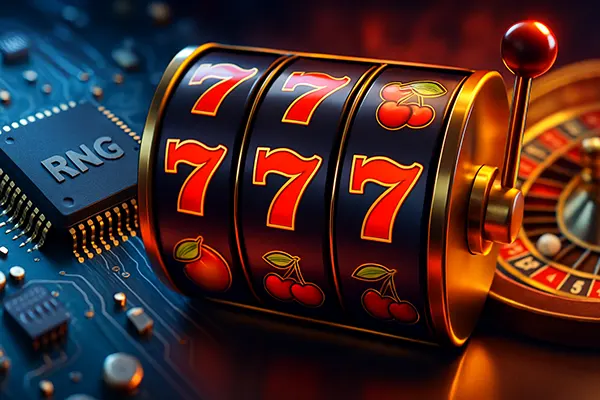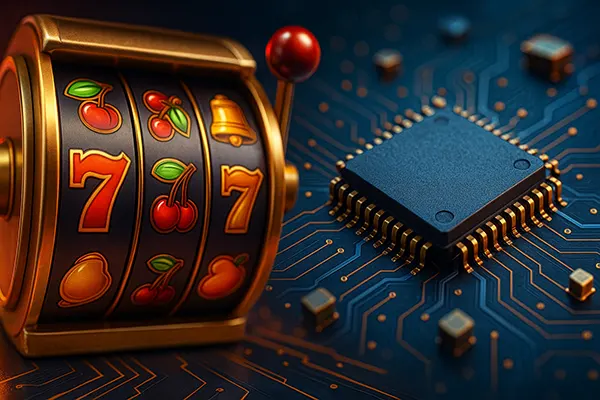
How Random Number Generator (RNG) Algorithms Work in Slots: The Truth Behind “Randomness”
Random Number Generators (RNGs) play a crucial role in the functioning of modern slot games. Understanding how they operate sheds light on the fairness and unpredictability of these games. Despite common myths, slot outcomes are neither influenced by previous spins nor can they be predicted by players. Below, we examine how RNGs work, their mathematical basis, and what makes them trustworthy.
What Is an RNG and Why It Matters
At the core of every digital slot lies a software algorithm called a Random Number Generator. Its job is to continuously produce a stream of numbers, each representing a potential outcome on the slot’s reels. These numbers are generated independently of any player action, making each spin unpredictable.
There are two primary types of RNGs: True RNGs and Pseudo RNGs. True RNGs are based on physical phenomena, such as radioactive decay, while pseudo RNGs, which are more common in online slots, rely on complex algorithms and seed values. Despite being algorithmic, pseudo RNGs are sufficiently random for gaming purposes when properly implemented and tested.
The RNG does not activate only when a player hits the spin button—it runs constantly, cycling through thousands of number sequences every second. When a spin is triggered, the RNG captures the exact sequence at that nanosecond, determining the outcome instantly.
Ensuring Unpredictability and Fairness
To prevent bias and ensure fairness, reputable software developers use RNGs certified by independent testing agencies. These organisations, such as eCOGRA, GLI, and iTech Labs, audit and verify the algorithms using statistical tests to confirm the uniformity and unpredictability of the results.
Such audits test the entire system under various conditions and scenarios. They assess the frequency of symbol combinations, volatility levels, and distribution of wins. If any predictable patterns or anomalies are found, the RNG fails certification and must be adjusted.
These certifications are vital, as they reassure players that no external factors—neither from the developer nor from the operator—can manipulate the outcome of a spin. Compliance with legal and regulatory standards is also a key requirement in most jurisdictions for a licence to operate.
Common Misconceptions About RNG in Slots
A widespread myth is that slots operate on cycles, and that certain machines are ‘due’ for a win after a losing streak. In reality, each spin is an independent event. The RNG ensures that the outcome of one spin has no effect on the next, breaking the illusion of patterns or streaks.
Another misconception is that a machine can be ‘hot’ or ‘cold’. While it’s true that players may encounter winning or losing runs, this is purely coincidental. The randomness of outcomes means that the next spin has the same statistical probability of producing any symbol combination, regardless of prior results.
Furthermore, stopping the reels manually, changing bet sizes, or switching machines has no effect on the RNG’s output. These are psychological illusions rather than genuine tactics to influence results. The integrity of modern slot games relies entirely on the RNG’s impartiality.
The Role of RTP and RNG
While RNG determines the randomness of each spin, the Return to Player (RTP) figure reflects the expected long-term payout percentage. For example, a slot with a 96% RTP is expected to return £96 for every £100 wagered over millions of spins.
The RNG is programmed to produce outcomes that, over time, match the intended RTP. This does not mean that each session reflects the RTP—short-term sessions can deviate significantly. However, over extensive play, the results should statistically align with the advertised figure.
Understanding the distinction between RTP and RNG helps players grasp how slots are both fair and unpredictable. A high RTP offers a better chance of long-term returns, but the RNG ensures no predictable path to achieving them.

How RNG Technology Has Evolved
RNG technology has advanced significantly since the early days of digital slots. Originally based on simpler algorithms, today’s systems employ cryptographic techniques and improved entropy sources to ensure more secure and truly unpredictable number generation.
In modern systems, RNGs are often embedded into hardware security modules or rely on hybrid techniques combining pseudo-random and true random elements. This hybridisation enhances the randomness quality and makes the system more resilient to reverse-engineering attempts.
Software updates, rigorous testing, and improvements in computing power have contributed to the development of more sophisticated RNGs. These improvements are essential not only for fairness but also to meet regulatory scrutiny and player expectations of transparency.
Regulatory Oversight and Future Trends
Licensing authorities such as the UK Gambling Commission and the Malta Gaming Authority require stringent RNG testing as part of their certification processes. These standards ensure that all slot titles meet acceptable levels of fairness and reliability before being offered to the public.
As the industry moves towards blockchain-based systems and increased transparency, some developers are experimenting with provably fair RNGs. These allow users to verify the fairness of each spin using cryptographic proofs, adding another layer of trust.
Looking forward, we can expect even greater adoption of advanced RNG verification tools and third-party audits, ensuring that both the developers and the operators remain accountable. These trends will further cement the importance of fair algorithms in maintaining trust between players and games.
-
 Casino Games With Skill Elements: Facts Versus Misconce...
Casino Games With Skill Elements: Facts Versus Misconce...Debates about whether skill plays a meaningful role in certain …
12/02/2025See more -
 How to Choose a New Casino in 2025: A Detailed Review T...
How to Choose a New Casino in 2025: A Detailed Review T...The rapid growth of licensed online gambling environments in 2025 …
11/13/2025See more -
 VoltageBet Casino Review: Crypto Orientation, Innovatio...
VoltageBet Casino Review: Crypto Orientation, Innovatio...VoltageBet Casino stands out in 2025 as one of the …
10/20/2025See more
